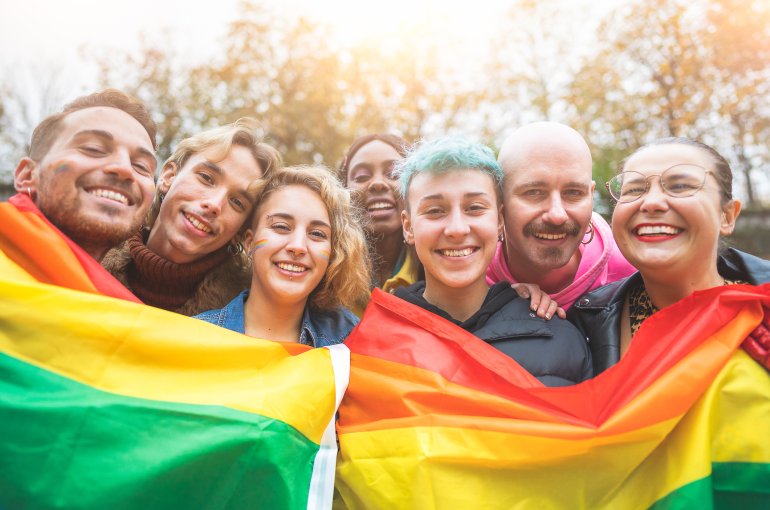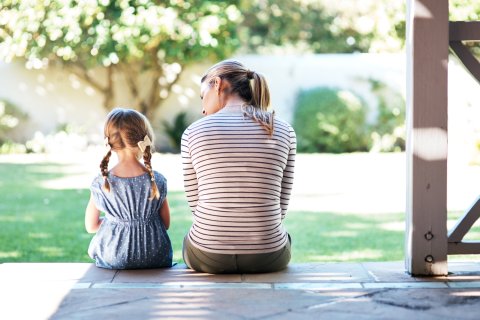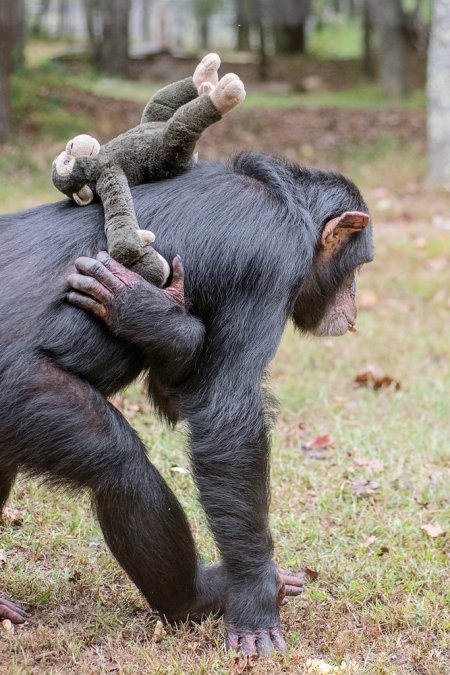Youth research explores gender differences among primates

What can youth researchers like ourselves learn from gender differences among bonobos and chimpanzees? Frans de Waal, Emeritus Professor at Utrecht University, gave a lecture about his book Different: Gender Through the Eyes of a Primatologist for students at the Faculty of Veterinary Medicine. Margreet de Looze, youth researcher at Utrecht University, took part in a panel afterwards in which she responded to his findings based on her own expertise in relation to gender and youth.
Tolerance

Gender diversity exists among primates as well. Not all animals ‘act’ like the biological sex they were born with. “Donna, for example, was a chimpanzee that was born with female physical characteristics, yet Donna displayed more masculine behaviour. Although Donna deviated from the norm in this way, this chimpanzee was still accepted by everyone in the group – males and females alike. The difference between people and other primates is the degree of tolerance we have for gender diversity: people appear to be much less tolerant than apes. One possible explanation is language: using language makes you more likely to think in terms of boxes. When someone doesn't fit into the box we have in mind, we find that person odd, we discriminate against them, or we exclude them.”
A problematic development, according to De Looze: “Today, you often hear people saying that gender diversity is a hype because there is an increase in young people who do not feel they belong in either box, ‘girl’ or ‘boy’. As if it is amusing or interesting to be different. What many people don't realise, however, is how much resistance these young people encounter and the kind of treatment they must endure. That ill treatment comes from parent, peers, teachers and random people they run into in public. There are a multitude of studies showing that there is still a lot of aggression aimed at people who are not cisgender and not heterosexual. That ranges from implicit forms such as being stared at and asked inappropriate questions to explicit forms of aggression – like physical violence that can sometimes be deadly.”
An explanation of gender versus sex
The concept of gender is a social construct. We as a society decide what is ‘masculine’ or ‘feminine’ and what kinds of behaviours go along with those categories. A person's sex, on the other hand, has to do with the biological characteristics that make them male or female. A cisgender person is someone whose biological sex is the same as their gender identity. When a person is transgender, they are born with sex characteristics that differ from their gender identity. Non-binary people do not identify with either of the two binary categories (male and female).
Parental role

Parents can be an important source of support for young people who are searching for their gender identity. “It is important that they talk to each other about it. And that parents – rather than thinking their child has been ‘infected’ by other people – take their children seriously and truly listen to them. I imagine it can be difficult for some parents when their child says they are genderfluid, for instance, or that they identify with a gender other than their biological sex. As a parent, you might think: my child is going to have a hard time in this society and I want to spare them that. But the problem doesn't lie with your child's gender identity. The problem is other people's reactions. Parents can play an important role in increasing the knowledge and awareness of the people around them.”
Learning about gender
So how do children first learn about the concept of gender? Among apes, the method De Waal observes most often is self-socialisation. Young primates see the examples of those around them and imitate that. “We see this, for instance, in the techniques wild chimpanzees use to ‘fish’ for termites and ants using twigs. Daughters tend to use exactly the same technique as their mother did, while sons tend to develop their own techniques for obtaining food. We observe the same thing with regard to diet: the young female apes eat the same things their mothers do and the young male apes eat the same things as the other adult males in the group.”
Interaction between nature and nurture

Yet De Waal believes strongly that gender is not only learned, but is also the result of interaction between nature and nurture. The congenital aspect, in other words, does play a role: “Female primates are naturally more drawn to babies or toys that resemble infants. If we give female and male primates dolls, we see that the females carry them around all day and play with them, while the males either pull them apart or try to see whether there is anything inside. Young male primates, on the other hand, tend to roughhouse more when they play. It would seem that these kinds of play prepare both the males and the females for adult life, in which the two sexes will take on different tasks.”
If we give female and male primates dolls, we see that the females carry them around all day and play with them, while the males either pull them apart or try to see whether there is anything inside.
Adoptive dads
This does not mean that male apes are incapable of carrying out female tasks or vice versa. “Many times, when a baby ape’s mother dies, the infant is adopted not by another mother but by a male ape. DNA tests have been carried out on these adoptive dads and they are virtually never the biological fathers. The males carry the infant around, just as its mother normally would. Research shows that apes that have been raised by these adoptive dads are just as successful in adult life as infants that were raised by their mother.”
De Waal argues that – biologically speaking – while there may be certain tendencies that go along with a certain gender, these are not deterministic. On top of which, biological characteristics can change due to environmental or behavioural factors. One of the few studies of humans mentioned by De Waal dealt with this phenomenon. “When men become the primary parental caregiver, their brains even change a little: the amygdala (the area of the brain that controls emotions) gets bigger, the amount of oxytocin (a hormone that stimulates social connections) goes up and their testosterone level decreases.”

Gender, therefore, is a sensitive subject that children and young people may struggle with. How can you, a youth professional, facilitate their personal growth in this area? De Looze: “I think we still have a long way to go in terms of knowledge. My impression is that while many youth professionals are eager to do the right thing, they are also afraid of making a mistake – especially because gender is such a sensitive issue. That's why input from young people themselves is so invaluable. For example, when teachers are struggling with the theme of gender and afraid to do or say the wrong thing in class, my advice to them would be: ask your pupils! We have to get away from the habit of talking about young people and start talking to them instead.”
But it is important that young people not underestimate themselves, either. “I want to impress upon young people that their ideas and insights matter, and that the world will benefit from hearing them. Revolutions nearly always begin with the youth. Young people are capable of effecting real change and older generations can learn a great deal from them. Gender is yet another area where young people have taken on a leading role in recent years. Now it's important for older generations to listen to them and be open to what they have to say. Because we need one another if we want to achieve lasting change: young and old, cisgender, non-binary... In the end, this is something we all must do together.”

